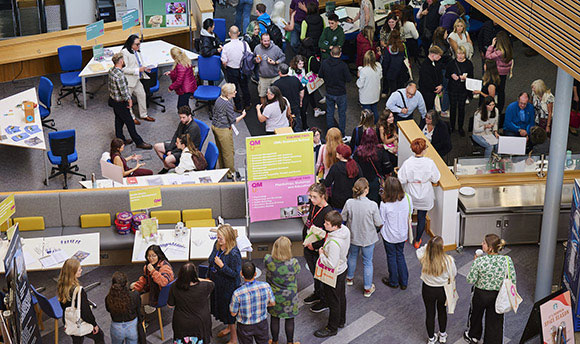QMU A Guide to Clinic Ethnography
A Guide to Clinic Ethnography
Core protocol for assessment of patient experience and service provision culture
Clinic ethnography is a qualitative approach based on ethnographic methods. Ethnography is a methodology popular in anthropological research, as well across the social sciences, designed to systematically study people and cultures. An ethnographic methodological approach is in-depth, flexible, iterative, participatory and focuses on understanding meaning in context. It is built on the premise of the researcher immersing him or herself into the social world of the participants in order to build trust, rapport and an ‘emic’, or insider’s, perspective of their lives.
Applying ethnographic methods to a health or clinic setting can be a valuable tool for health researchers. Herdt (1999) states that “what distinguishes clinical ethnography from anthropological ethnography in general is (a) the application of disciplined clinical training to ethnographic problems and (b) developmental concern with desires and meanings as they are distributed culturally within groups and across the course of life”. Researchers are able to immerse themselves to a degree, allowing for richer understanding of the social and power dynamics of a clinic, provider behaviours, patient perceptions and experiences of health care. This can be important for assessing issues such as: access to care, quality of care, continuity of care, and other barriers to care including indirect costs (e.g. transportation) and lack of trust in health care providers.
Long (2008) explains the value of using ethnographic methods in a hospital, providing opportunities to explore not only the organisational and structural characteristics of an institutional system, but also a space where new identities are forged: “for many people, hospitals are places in which their previous identities as a healthy person, as a mobile person, as an immobile person, are stripped bare. New identities, such as a cancer survivor, a more mobile person with a new hip, a rehabilitated person with one less limb are forged”. Patients, health providers and a range of staff members and visitors (including researchers) move about these spaces, bringing with them multiple roles and skillsets, which have an impact on the way illness and treatment, are experienced. Gordon (2004) usefully describes clinic ethnography as: “the attempt to situate clinical cases within a cultural framework, one that is based on both the specialized expertise of the clinician and the broad-based grasp of cultural issues that characterizes the ethnographer”.
Undertaking clinic ethnography involves a range of participatory and non-participatory data collection methods, including semi-structured interviews, observations using “thick” description, and reviews of routine data sources (e.g. treatment register, patient records, clinic guidelines and protocols). These are used to develop patient case studies, clinic mapping, infrastructural assessment, tracking patient pathways, time-motion studies for different cadres of health workers. Additional participatory techniques (e.g. action research, photo-voice, Participant Ethnographic Evaluation Research) may be used to support the collection and collation of detailed field notes. Specifically, the methods outlined in this manual will allow you to capture issues relating to space, infrastructure (e.g. building design equipment, and technology), consumables (e.g. medicines and medical devices), as well as movement and flow of patients and health workers, and ideas and values about health, risk, illness, and health- related behaviours; all issues which are pertinent to settings where NCD and MHPSS care is provided.
The guidelines provided below are general and intended as a starting point. We offer some steps, tips and suggestions, along with references to further resources that you will be able to use to develop and refine your study. Examples of instruments used and data collection experiences are provided throughout this manual for reference purposes. As each project is context specific, the instruments provided should not be used without further adapting to the specific objectives of each project.
Find out more about the RUHF here: RUHF Website
NIHR Research Unit on Health in Situations of Fragility (RUHF)
Institute for Global Health and Development
Queen Margaret University,
Edinburgh, UK
T: T: +44 (0) 131 474 0000



